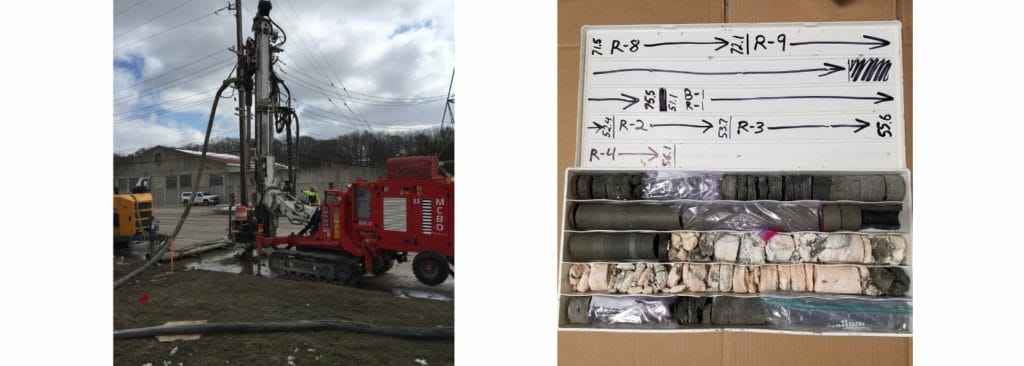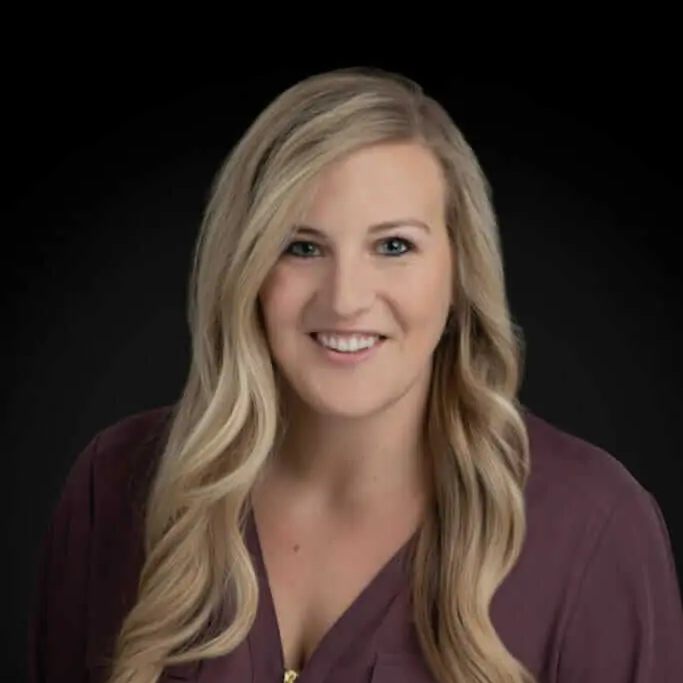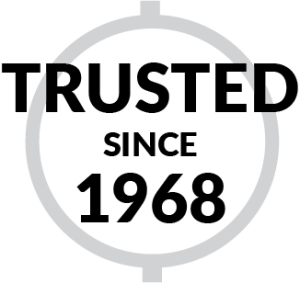Subsidence can be Due to Voids in the Michigan Formation Bedrock
By: Todd D. Munger, P.E. | Geoenvironmental Department Manager

Subsidence is often defined as “the gradual caving in or sinking of an area of land.” With such a simple meaning, subsidence can wreak havoc on buildings that are erected on this unstable surface.
Bedrock is commonly considered to be a very competent material upon which to support structures and is not often studied in detail during geotechnical studies as a result. Why would bedrock ever present a risk?
Subsidence Problems Realized in Grand Rapids, Michigan
Voids in bedrock and the associated risk of ground subsidence were first identified in Grand Rapids in the 1990s when a historic downtown auditorium experienced sudden building settlement requiring emergency stabilization consisting of specialized grouting to fill voids in bedrock.
Subsequent geotechnical studies performed by Materials Testing Consultants (MTC) for the Grand Rapids Convention Center project, Monroe Sewer Relocation project, JW Marriott project, I-196 Baldwin Street Interchange project and others included conventional soil investigation as well as investigation of the underlying bedrock to confidently understand the potential presence of voids and the possible ensuing risks to the projects.
These studies allowed appropriate stabilization of voids and support of structures to be considered and included as part of design and construction. Several of these projects involved the injection of hundreds or thousands of cubic yards of low-slump grout under pressure to treat and fill voids to minimize the risk of future ground subsidence.
Bedrock Void Exploration Improved & New Structural Support Strategies Developed
As our understanding of the bedrock void problem grew, specialized rock coring techniques were developed by MTC and MATECO Drilling Company to identify voids more accurately within bedrock. Working with the “MTC Mini Pile,” we were able to produce both a high capacity micropile foundation element for building support while simultaneously filling intersected voids in bedrock through low-mobility grouting.
In addition to new-build projects, voids in bedrock have caused sudden or progressive settlement of existing sites including buildings, slabs and pavement which MTC has been involved in with the study and stabilization effort. These include high-rise academic institutions in downtown Grand Rapids and industrial and commercial facilities.
Getting At The Source of Bedrock Voids – Gypsum Bedrock
Ironically, the predominant source of voids in bedrock is intimately connected to what made Grand Rapids famous in the late 1800s and early 1900s: namely, high-quality gypsum bedrock of the Michigan Formation Bedrock. Once mined from both surface and room and pillar mines throughout the Grand Rapids area, gypsum is an evaporite rock whose crystals form during the evaporation of water and are capable of dissolving under the correct groundwater chemistry conditions.
Fractures within the bedrock regularly carry fresh groundwater as groundwater levels fluctuate, creating water chemistry conditions conducive to dissolve the gypsum and carry away the minerals over time. As the gypsum is slowly dissolved, a void is created, the ultimate size of which is dependent on the gypsum properties, long-term groundwater conditions and time.
As the void(s) becomes larger, the roof rock thickness may reduce to the point where it deflects or collapses into the void. Or the void(s) could create a direct conduit to the overburdened soil, providing a means for soil loss (soil migration) over time into the void, resulting in significant overburden loosening and ultimately ground subsidence.
Conduct Void Exploration Studies Before Building On Bedrock
MTC has performed dozens of bedrock void studies over the last three decades within the Grand Rapids area, providing project-specific solutions to treat voids in rock, stabilize and improve loosened overburden and, if required, underpin structures to minimize the risk of future settlement. Our goal, as always, is to provide our clients with high-quality geotechnical engineering services allowing you to “Build with Confidence” knowing potential risks to your projects have been studied and proven solutions provided.
To talk with us about your potential project, email me at tmunger@mtc-test.com or call me at 800.968.8378. We look forward to finding solutions for your subsidence problems.


